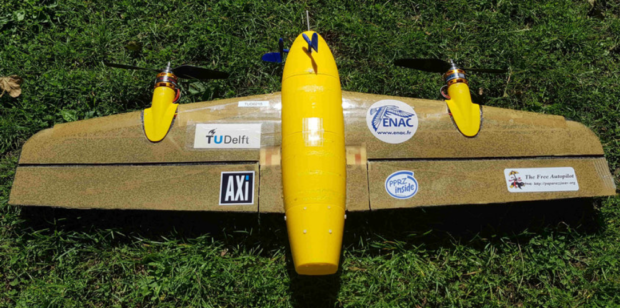Researchers at the Faculty of Aerospace Engineering, Delft University of Technology, Kluyverweg 1, 2629 HS Delft, The Netherlands have recently published a paper proposing an airspeed instrument using microphones as airspeed sensors.
Abstract
This paper puts forward a novel design for an airspeed instrument aimed at small fixed-wing tail-sitter unmanned aerial vehicles. The working principle is to relate the power spectra of the wall-pressure fluctuations beneath the turbulent boundary layer present over the vehicle’s body in flight to its airspeed.
The instrument consists of two microphones; one flush-mounted on the vehicle’s nose cone, which captures the pseudo-sound caused by the turbulent boundary layer, and a micro-controller that processes the signals and computes the airspeed.
A feed-forward single-layer neural network is used to predict the airspeed based on the power spectra of the microphones’ signals. The neural network is trained using data obtained from wind tunnel and flight experiments. Several neural networks were trained and validated using only flight data, with the best one achieving a mean approximation error of 0.043 m/s and having a standard deviation of 1.039 m/s.
The angle of attack has a significant impact on the measurement, but if the angle of attack is known, the airspeed could still be successfully predicted for a wide range of angles of attack.
The complete oaer can be accessed here.
Source: MDPI

